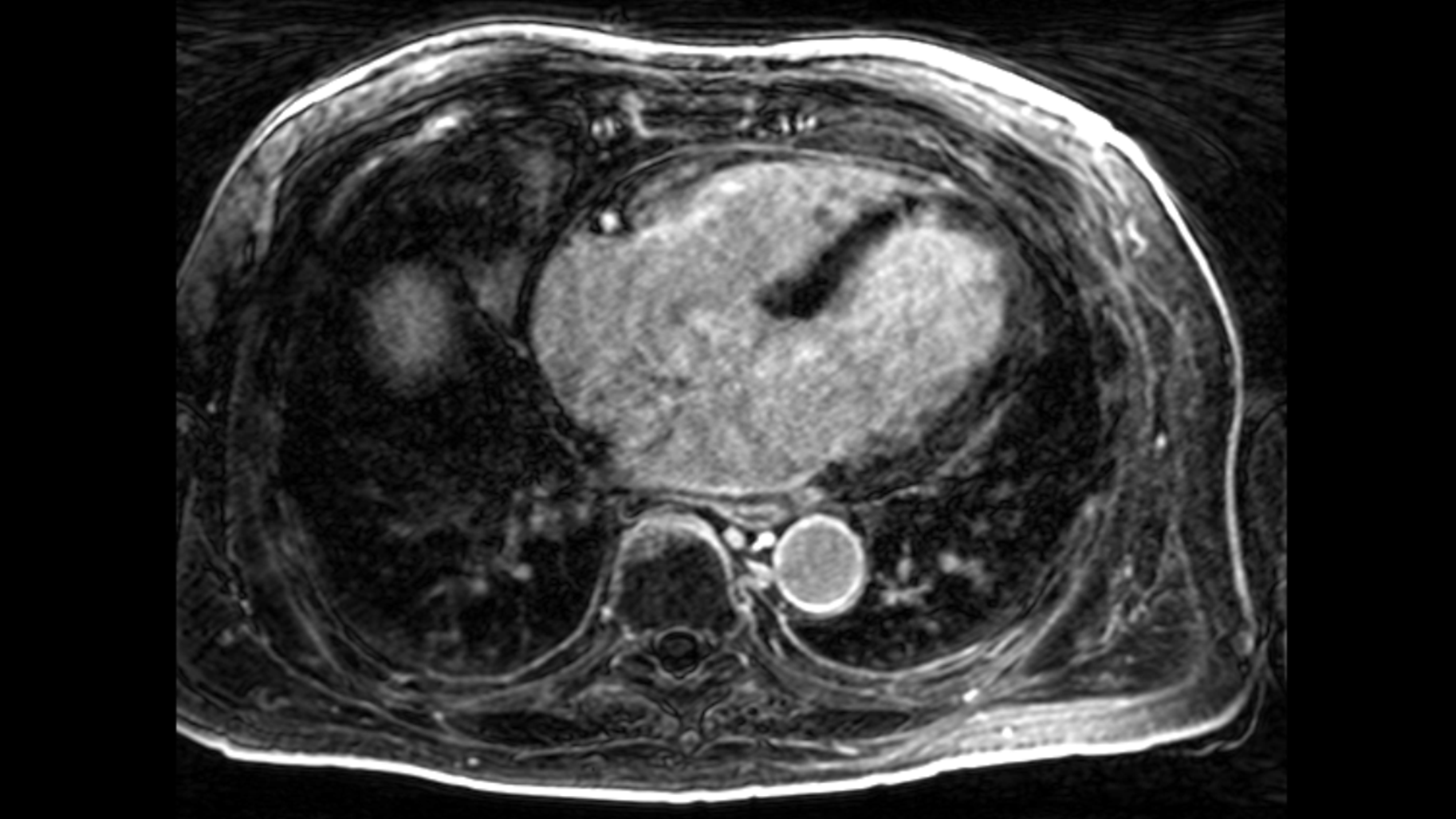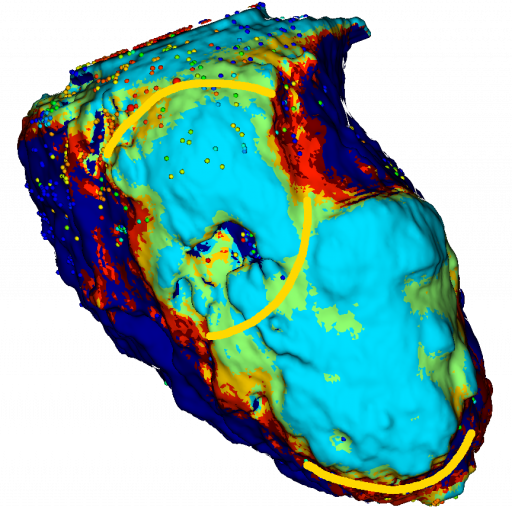
MusiCardio: a software created by scientists for doctors
Cardiac arrhythmias are one of the leading causes of death in the Western world. For cardiologists, better understanding these processes and being able to pinpoint the precise location of the problem in the heart is therefore essential. "With MusiCardio, we will be able to use MRIs sent by radiologists and create meshes, i.e. 3D representations of the heart or part of the heart, in order to create precise simulations of what is happening in this organ" explains Pauline Migerditichan. This process allows healthcare workers to move from a 2D view (with MRIs) to a 3D view of the problem.
A digital mesh to understand the complexity of the heart
Currently, when a patient suffers from a heart problem, doctors can insert a catheter that will scan the inner walls of the heart to map its electrical activity. However, this technique allows only a surface analysis and the intervention time is very long for the patients. "The goal of our research is to give cardiologists all the information they need about what is happening in the heart at a given time without them having to operate to see for themselves," says Pauline Migerditichan.
To do this, the researchers are developing a methodology based on an "inverse problem" (equations that are difficult to solve): thanks to collaborations with doctors from the IHU Liryc, the scientists will analyze electrocardiograms performed by doctors and will try to reconstruct, thanks to the construction of meshes and the numerical resolution of the inverse problem, what is happening at the epicardium (surface of the heart) or the endocardium (the interior).
Constant collaboration between scientists and physicians
"Once we have created a mesh, we have to check that it conforms to clinical reality," explains the young engineer. To do this, the scientists of the Carmen project-team work in close collaboration with the health staff of the IHU Liryc. Thus, the scientists will be able to compare their reconstruction, carried out thanks to mathematical and computer techniques, with the data collected during operations using catheters as well as the information collected on electrocardiograms. The aim is to define a non-invasive method that best corresponds to clinical reality.
Many applications such as the European project SimCardioTest
MusiCardio is now used in many research projects, such as the European project SimCardioTest, involving researchers from Inria and several European countries. The objective of the project is quite simple: to use cardiac modeling and simulation to help design new medical devices and drugs. To do this, the researchers use 3D medical images to build a digital twin of the patient thanks to MusiCardio, and thus be able to test different study hypotheses. "Pauline Migerditichan's work on MusiCardio is very interesting for the SimCardioTest project, especially as it is at the interface of applied mathematics and medical imaging: it allows us to verify that we are extracting the right information from medical images for what we want to simulate," said Maxime Sermesant, a researcher in the Epione project-team at the Inria Côte d'Azur University Center and coordinator of the SimCardioTest project. The next step in the project is to validate the models that have already been produced in order to carry out virtual clinical trials.
- Discover the medInria open source software
- "What computational sciences can do for heart", Project Repository Journal, March 2022
- Presentation of EquipEx Music
- Learn more about SimCardioTest
